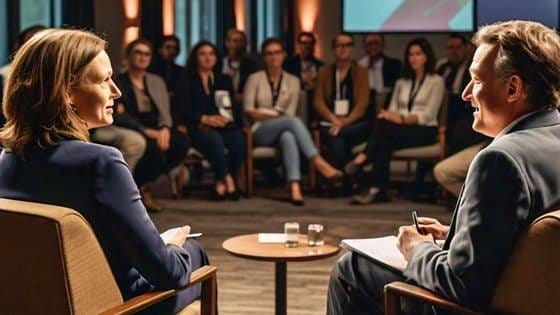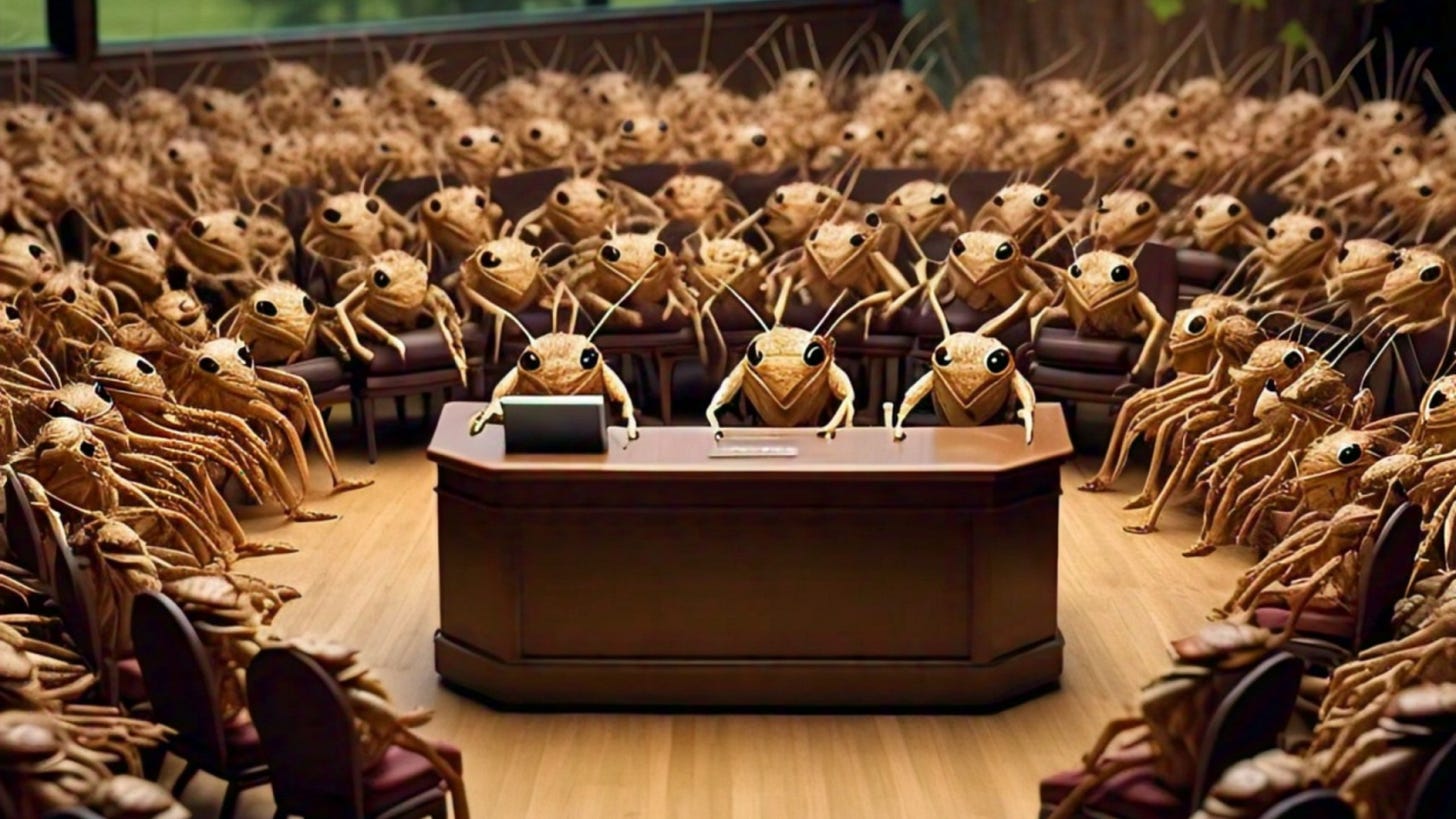The Craft of Conferencing Newsletter
Issue No. 2 of Insights on public speaking and the business of conferencing from journalist, podcaster, and B2B events producer Charles Laughlin.
We share news, insights, opinions, and best practices here on The Craft of Conferencing.
Being good at conferencing (as a producer, speaker, revenue leader, marketer, or networker) is a game changer for careers and brands.
Every skill that falls under the “conferencing” umbrella can be cultivated.
Organizing, curating, ideating, writing, speaking, networking, interviewing, selling. Anyone can learn to do any of these things. Yet few of us are great at any of these on Day One.
Our philosophy is simple. You get out of conferencing what you put into it.
Please enjoy this newsletter. And please follow us on LinkedIn.
The Art of the Interview
Is Interviewing a Skill or an Art?
Conducting interviews is both a skill and an art. Picasso mastered drawing long before he imagined cubism. Cultivated skills support great art.
OK, this is a grandiose way to describe conducting a fireside chat at your company’s annual user group conference.
Who among us hasn’t been in the audience for a fireside chat led by someone who clearly has no interviewing skills? It’s painful. And maybe their team tried to get through this by creating an interaction so carefully scripted that R2-D2 and C-3PO could have stepped in, read the same script, and made it better.
How do you turn the potentially inartful interaction that is the conference fireside chat into something you’d expect from Kara Swisher or any BBC announcer?
You probably want something that is interesting but doesn’t make your subject break into a flop sweat. I have some suggestions.
Set an intention for the interview to be good, not just faithful to an established set of talking points. Audiences receive information better when they are engaged. If your only goal is to do no harm, the chat will almost certainly be boring.
The best interviews feel like conversations. Have a few online practice sessions if you have time (make time if you don’t) so the parties are not meeting for the first time on stage and then reading from prepared questions and responses.
Creating a list of fairly detailed questions is necessary for those with limited experience doing this. Veteran interviewers often just have topics in their notes and they formulate the actual questions in real time. Veterans also tend to decide the order in which the topics are raised partly in advance and partly based on the flow of the conversation. Follow ups tend to be made up in real time.
Subjects need to play to their strengths. Subject matter expertise, experience, perspective are more often strengths for parties speaking at events than a quick wit. Speakers, including interviewers, should lean into their strengths. If you are helping speakers prepare for conducting an on-stage interview, do not try to make them funny and engaging if they are not. Do not write jokes for them. Help them create a good set of serious questions and coach them on some very basic stagecraft to get through it successfully.
Define success in advance. Ending on time is nice, but it should not be the goal. Every session should end on time. Aim higher. Audience engagement is a good objective. This can be intangible. But you can usually tell from body language (leaning in, nodding, not buried in phones, not walking out to take calls), audible reactions (gasps, laughter, applause), or if people want to ask a questions.
The parties in a fireside chat should sit close together. By close I mean on the edge of uncomfortable, depending on one’s personal bubble. This is especially important if the session is being filmed. It’s also just odd to interview someone who is at the other end of the stage. If you wish you had a little bell to get the other party’s attention, you are too far away.
If you are the interviewer, make eye contact with the subject whenever you are asking a question. Also make it clear that you are listening to their responses. Again, eye contact achieves this. Do not fumble through your notes for the next question while they are talking. This takes a little practice. But if you can’t do this, it shows.
Encourage follow-ups, especially when they are obvious based on what is said in the moment. If the fireside chat is so tightly scripted that you do not have time for any freelancing of new questions or follow ups, this needs to be made clear beforehand. But I do not recommend being this scripted. If a session is highly scripted, it is unlikely to be any good. Admittedly when the parties have little or no experience, tight scripting may be inevitable. If you have an experienced interviewer, I recommend leaving a little space for organic diversions.
Many of you are probably not comfortable formulating follow ups while on stage. This is an advanced interviewing skill. When a moment that begs for a follow up happens, try prompting the subject with, “Can you say more about that?” Top interviewers use variations on this one all the time. It works.
Being on time is rule one in running successful events. I recommend a downstage countdown clock for all sessions. Make sure it is visible to everyone on stage. For a 15-minute fireside chat, when the clock hits one minute to go, it’s time to tie the bow. Other session formats may have different wrap up points, but you always need to know when and how you are going to wind things down.
If a speaker is in the middle of a long answer at the wrap up point, you need to gently prompt them that you are almost at time. As the interviewer/moderator, you need to command this moment. If the speaker does not wind down quickly you need to interrupt them, lean gently toward them as you do, and say “I am sorry we are going to have to end it here.” Then quickly thank the speaker and ask the audience to join you in doing so. Don’t give them time to start talking again. And don’t forget to engage the audience here. Once they clap it’s over.
The Craft of Conferencing
What’s the Best Cure for a Cricket Infestation?
No real crickets were harmed for this story. They are a metaphor for a situation that most speakers dread. But it happens more often than not.
And that is that moment when at the end of a keynote or panel the audience is asked if they have any questions. And you are greeted with the soothing chirping of crickets. Even if they are not there you hear them. And they are loud.
When this happens there are a few ways to handle it.
One is to have the speaker eat up all the time with their prepared talk and then announce, apologetically, that we are running long and there will be no time for Q&A. Everyone who does conferences for a living has experienced this by accident or design.
A better way is for the moderator to prepare a bank of good questions so they are ready to eat up the 5,10, or however many minutes are left for Q&A with an actual Q&A. I stick these questions in my back pocket -- figuratively since I rarely write anything down.
The moderator should tell the audience that if anyone has a question, they should raise their hand, step up to the mic, or follow whatever process is used for fielding audience questions. The moderator should then dive in and start asking their back-pocket questions. Ideally, a few freshly conceived questions are mixed in as well.
And if someone in the audience wants to join in, the moderator can pause their Q&A and acknowledge the question from the audience.
I had more to say on our blog. Read More
The Craft of Conferencing Podcast E1: Daphne Earp Hoppenot, The Vendry
In case you missed it, the inaugural episode of The Craft of Conferencing Podcast came out this week featuring an interview with event-tech founder Daphne Earp Hoppenot, who recently sold The Vendry to Groupize. The conversation covers the state of B2B events, The Vendry’s eventful ride from launch to exit, and much more.
We have more great episodes coming soon.
“Founding Member” subscribers receive 10 free ad placements in this newsletter or 15-second ad reads on our podcast.
To discuss newsletter and podcast sponsorships and collaborations, or anything else, write to us at Charles@craftofconferencing.com.






